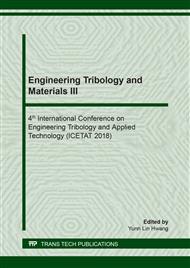p.97
p.105
p.111
p.117
p.123
p.129
p.135
p.141
p.145
Study on Cylindrical Heatsink Forging Process Considering Friction Condition
Abstract:
The feasibility of forging of AL-1050 alloy of cylindrical heatsink under warm conditions is demonstrated in the present work. The stress-strain curves and friction factor play an important role in the cylindrical heatsink forging. The purpose of forging lubrication is to reduce friction between blank and die, and to decrease resistance of metal flow to die. The stress-strain curves at different temperatures are obtained by compressing tests. The friction factor between 1050 aluminum alloy and die material are determined at different temperatures by ring compression tests with graphite lubricants. The compressing and ring compressing tests are carried out by using the computerized screw universal testing machine. The finite element method is used to investigate the forming characters of the forging process. To verify the prediction of FEM simulation in the cylindrical heatsink forging process, the experimental parameters such as stress-strain curves and fiction factor, are as the input data during analysis. Maximum forging load and effective stress distribution are determined of the heatsink forging, using the finite element analysis. Finally, the cylindrical heatsink parts are formed by the forging machine under the conditions using finite element analysis.
Info:
Periodical:
Pages:
141-144
Citation:
Online since:
September 2019
Authors:
Keywords:
Price:
Сopyright:
© 2019 Trans Tech Publications Ltd. All Rights Reserved
Share:
Citation:


